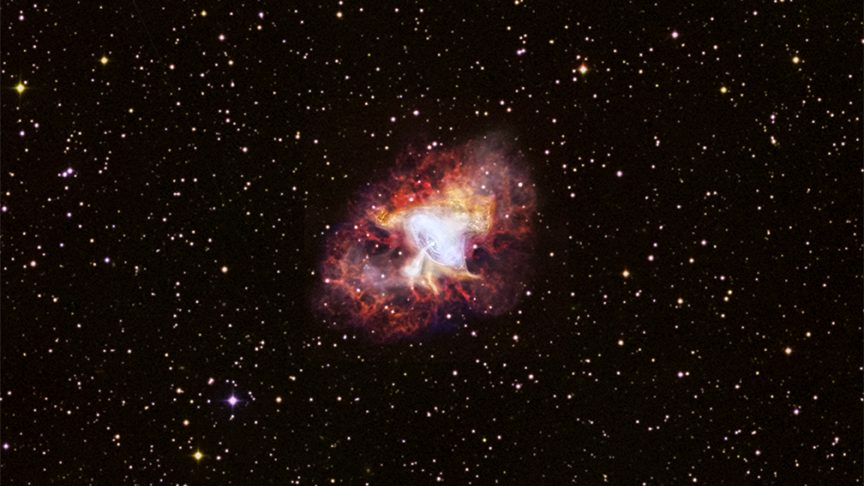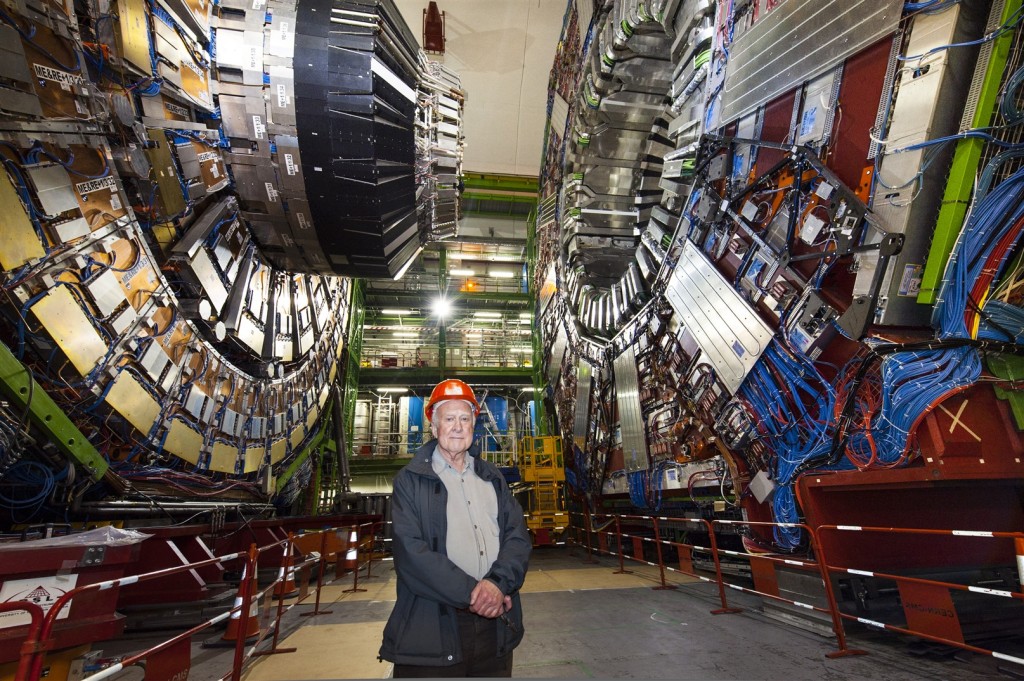
I suppose it had to come to this. Since 2003 I have considered many different potential solutions to the biblical-creationist distant-starlight problem. I presented a lecture in 2015 based on a 2003 summary of my five categories of where a solution might be found. In that list of categories I suspected that only timing convention and time dilation models had any hope of solving the problem.
By August 2015, when I gave the lecture, I had come to the conclusion that Jason Lisle’s Anisotropic Synchrony Convention (ASC) model was better than my own Carmeli-Hartnett model.
In the years leading up to 2015 I had discovered several serious inconsistencies with Carmeli’s cosmology. Besides those, there did not exist a viable 5D (space-time-velocity) version that could be used to give a robust description of the early universe on a biblical timeline.
In 2003, I pointed out that there is a problem of the light-travel time within the Milky Way galaxy with white-hole gravitational-well ESC-based time-dilation cosmologies. They cannot provide sufficient time-dilation. That problem has not been solved, though Russ Humphreys has developed a much better model since his first ones. I suspect though that his current model is somewhat ad hoc in the details to get it all to work.
On this website you’ll find articles on my use of Carmeli’s cosmology. They will all remain, but note, that I no longer have much faith in such an approach.
So that brings me up to the present. I now believe that Lisle’s ASC model is the best solution by a long shot. It works when other ESC based time-dilation models fail. For example, the problem of the effects of the Curse in the universe, can be answered with the ASC model but not with a time-dilation model. I recommend Lisle’s new book if you are interested in a simple solution that works and is consistent with the 6-thousand-year history of the Bible.
Recommended Reading
- Book: Apocalypse Now: On the Revelation of Jesus Christ
- Book: Merchants of Death: Global Oligarchs and Their War On Humanity
Follow me
- Telegram.org: @GideonHartnett
- Facebook: Gideon Hartnett
- X (Twitter): @gideon195203

To be notified by email put your email address in the box at the bottom of your screen. You’ll get an email each time we publish a new article.

Click this image to make a secure Donation (Stripe) !







17 responses to “My Current Thinking on Distant Starlight”
How does the ASC instantaneous speed of light explain the bending of light around massive objects? I would think that if light is instantaneous it would not bend. ASC is based on Einsteinian physics and is Einsteinian physics the final answer. In his book, Lisle talks about the “strange” things that can happen because of c but if c= infinite some of those equations would not work. I am not trying to be against all this but I do have questions about ASC.
LikeLike
You need to reread the last chapters of Lisle’s book. He explains there that to apply the ASC you must use the equations for ASC. If you do so you get the exact same physical result. It is like changing the units of measure from feet to meters, which does not change the physics. It is like (but not the same as) in the case of aberration of starlight where one must take into account the measurement system.
LikeLike
I was at first, resistant in accepting the ASC model over the time dilation models. I thought that the ASC model was introducing radically new physics or that it didn’t produce any new predictions or that it was useful for creation cosmology. That’s when I started to watch some of Lisle’s lectures and delved into your forum for more information, as well as Lisle’s email response to the authors who claimed to have measured the one-way speed of light that I realized that CMI’s critique of ASC is at best, misplaced, and at worst, misinformed! What I thought was new physics is actually a new coordinate system whilst using the same physics of relativity. Perhaps you should publish in the Journal of Creation a thourough assessment of your Carmeli-Hartnett model (which CMI says they prefer) and the ASC model, and include Lisle’s email response and that should suffice for CMI to reconsider their critique and instead realize that the Carmeli-Hartnett model is more ad hoc and unnecessarily complicated. I think they will reconsider.
This is sorta unrelated but it happened a similar thing to me when I submitted an email to them, saying that incorporating a Dual-Aspect Idealist framework to the evidence will help sharpen the YAC movement, as well as incorporating Digital Physics, since contemporary physics (both from theoretical and experimental physicists [particularly from quantum physicists]) are going in that direction, concluding that information is a far more fundamental aspect of the universe than matter, and the latter is an emergent phenomenon from the former. Along with the latest research from quantum physics which closes door to any interpretation that advocates local, and nonlocal, noncontextual hidden variables, and that a synthesis of the Copenhagen, Wigner-von Neumann (Consciousness-Causes Collapse) and Quantum Information Theory is the way forward. I told them that I would make a monograph arguing said case and my email was sort of a synopsis of what they will expect after laying out the details. I received a negative response, to which I rebutted and linked them to secular articles which substantiate my assessment of QM, which the seniors which Margaret Wieland (who asked them to respond to my email) said it was a gross misunderstanding of QM. Hopefully, they realize that the issue of the nature of reality and the origins debate is not something that can be separated.
LikeLike
I’ve read the book, great! It seems to me the first thing is to show that the one way speed of light is not c. I’ve seen some discussion around looking at mature things, but as John said, I think, we don’t really know what mature looks like.
Achievable proposals look at decay of magnetic fields.
What about this one: changes in the fine structure constant should show up in star light if stars are far away and millions of years old. If we don’t see that, that should go a long way. If you could achieve infinite precision here, it seems to me theoretically you could proof that the one way speed of light is close to or equal to infinite.
What I don’t understand though is the claim you cannot measure the one way speed of light. Yes, get the formulas, but from at least two proposals it seems you can get a very good indication that the one way speed of light is not the two way speed of light. That seems contradictory.
LikeLike
Yes, it is theoretically impossible to measure the one-way speed it would seem. This is linked to the fact that distant clocks need to be synchronised to local clocks to make such a measurement but the only way to synchronise clocks separated by a distance is by sending a light signal from one clock to the other. That gives the time of transmission of the light back to the other clock so the one-way speed could be measured. But the only way to synchronise the clocks is by assuming the one-way speed of light. So you have a circular argument.
LikeLike
Are you a co-author of Dismantling the Big Bang?
LikeLike
Yes
LikeLike
I am only now reading that book and am enjoying it very much. but I think it contains an error concerning the atomic number of Lithium on page 117 of the second printing. Lithium is the third element on all Periodic Charts, yet on this page of your book it says that its nucleus contains 4 protons and 3 neutrons.
LikeLike
Sorry. It’s a typo that got through.
LikeLike
Hi John,
I was wondering whether Jason Lisle’s ASC model explains the “Pioneer Anomaly” (see https://creation.com/pioneer-anomaly and https://creation.com/creationist-cosmologies-explain-the-anomalous-acceleration-of-pioneer-spacecraft). If it does not, then would Russell Humphreys’ latest GTD model be the preferred explanation for distant starlight?
LikeLike
No! One must use the relevant equations whichever value of the Reichenbach clock synchronisation parameter you choose. The physics will be the same whichever one you choose. The Pioneer Anomaly has been analysed under the ESC. If you used the ASC you would get he same physical result. If there was any experiment that produced different physics with a different choice of the Reichenbach clock synchronisation parameter then it would disprove the conventionality thesis. So on your last question the answer is also no, because either way there will be the same anomaly. Having said that, I believe the Pioneer Anomaly has been sufficiently well explained with the last publication of updated thermal modelling. And additional acceleration was obtained from the heat shield. But Russ H. disagrees.
LikeLike
Can you give a layman’s explanation for how thermal modeling explains the deceleration of the various outbound spacecraft (Pioneers 10 and 11, Ulysses and Galileo)? It seems counterintuitive to me. I would expect that any sunward acceleration of a spacecraft would be caused by the emission of mass from the shadowed side, which would require the shadowed side to be heated significantly. However, I would expect the sunlit side to be warmer than the shadowed side, resulting (if anything) in acceleration away from the sun, not toward it. (Also, solar wind would tend to accelerate objects away from the sun). I would also expect solar heating to be much less significant as the distance from the sun increases, so I wonder why this anomalous acceleration is more pronounced with distant spacecraft than with nearby ones.
LikeLike
Mitch, it involved modelling of the thermal recoil from the entire spacecraft structure.
Turyshev, Toth, et al., “Support for the Thermal Origin of the Pioneer Anomaly”. Physical Review Letters 108(24) April 2012.
DOI: 10.1103/PhysRevLett.108.241101 · Preprint available free from the arxiv.org
See images of modelling there.
The authors wrote:
I should say though that Russ Humphreys has made his own estimates and says it accounts for only 5% of the anomaly. But he has not modelled it like these guys did.
LikeLike
Hello John,
Am a 6-day, normal 24-hour day, young universe-young earth guy from a long way back. It is the only Biblically consistent and theologically coherent interpretation of Christ’s creative acts as agent in creation which synchronizes the rest of Scripture. I’ve been a student of this for many, many years, studying and reading intensely many sides of the issue. I even had a chance to sit down next to you and ask you some questions at an AIG conference more than a decade and a half ago. You won’t remember me.
I admire both you and Dr. Lisle , especially his work here on the ASC (I have read many of his books). I have also read and digested “Dismantling the Big Bang” and have given this book to others. I also admire Dr. John Byl and his premise of a Rapidly Matured Creation (RMC) model, and therein I suppose lies the nexus of my question.
I give you this only as background, because as a layman, not having a degree in the sciences, I seek understanding in regards to this light-travel-time problem.
Not wishing to cause dissension between brothers who are all adopted as sons, saved by grace, and will inherit the Kingdom together, I wonder your answers and/or critique of the RMC as opposed to the ASC. What are your (and perhaps, Dr. Lisle’s) main objections to the idea of a Rapidly Matured Creation? Are there both scientific and theological objections?
Both humbly and irenically submitted,
Steve Drake
LikeLike
I know of Dr Byl but do not know his RMC model.
LikeLike
John, is it possible that both models (ASC and time dilation) are correct? I mean, if the universe is bounded and has a center, there would be some time dilation, even if this is not the answer for the problem of light travel time. It seems that there are some processes in the universe that are occurring for more thant six thousand years, and time dilation could work in explaining this, while the one-way infinite speed of light explain how the light reach the earth rapidly. Russell Humphreys’ model of a spherical shell of water in the limits of the universe seems to be biblical (Genesis 1:6-7, Psalm 148:4), and this would produce some time dilation, at least in the past.
I have another question, if i’m not taking up too much of your time.
Jeff Zweerink from Reasons to Believe claims that, if the ASC model were correct, there would be a detectable gravitational field apart from earth’s gravitational field, but such field is not observed. Is he correct? I would like to see a response from you or from Jason Lisle on this issue.
Thank you for the opportunity to comment here. Your blog is awesome!
LikeLike
Yes, you could have both. The ASC model does not rule out any general relativistic effects. In fact, it is still debated about how to deal with simultaneity of distant clocks with general relativity.
I believe what Jeff Zweerink may be referring to is that an infinite speed of light would produce a gravitational field. Jason Lisle deals with this in his book, last chapter I think. In short, Zweerink is wrong. He has little knowledge of the subject of the conventionality thesis. He should take the time to study it.
LikeLike